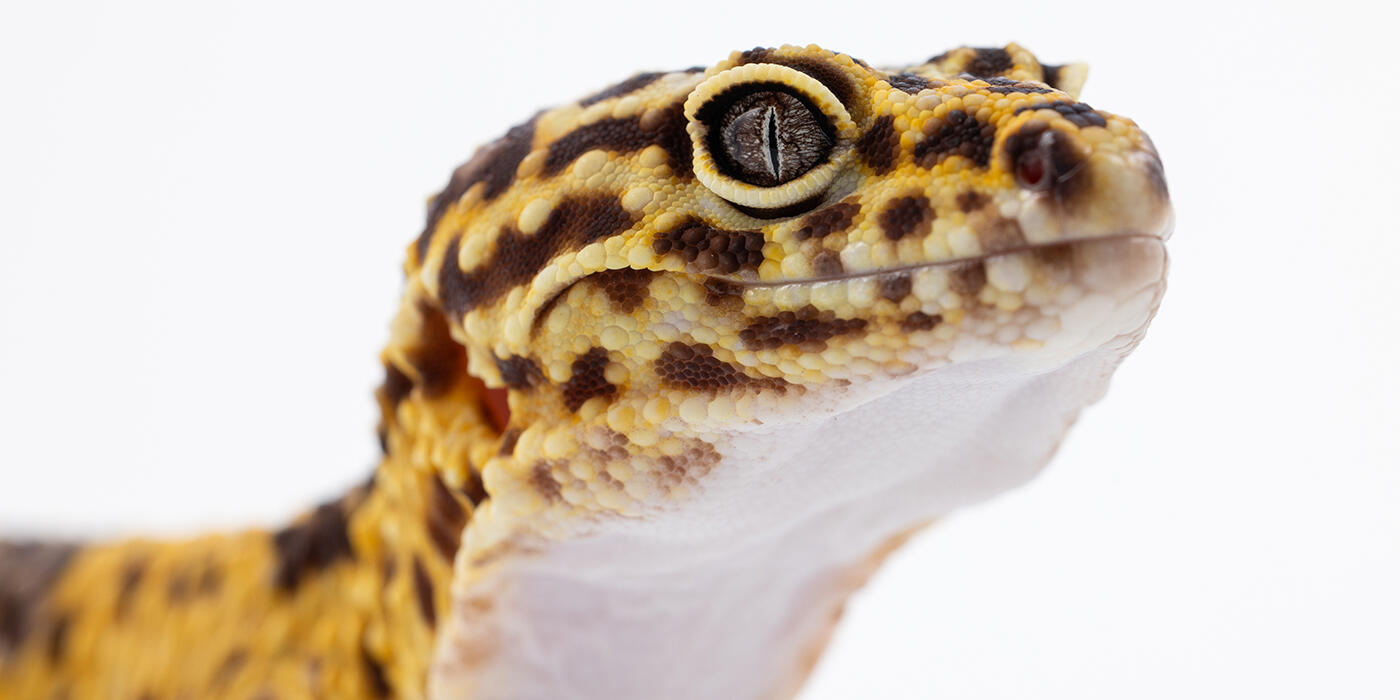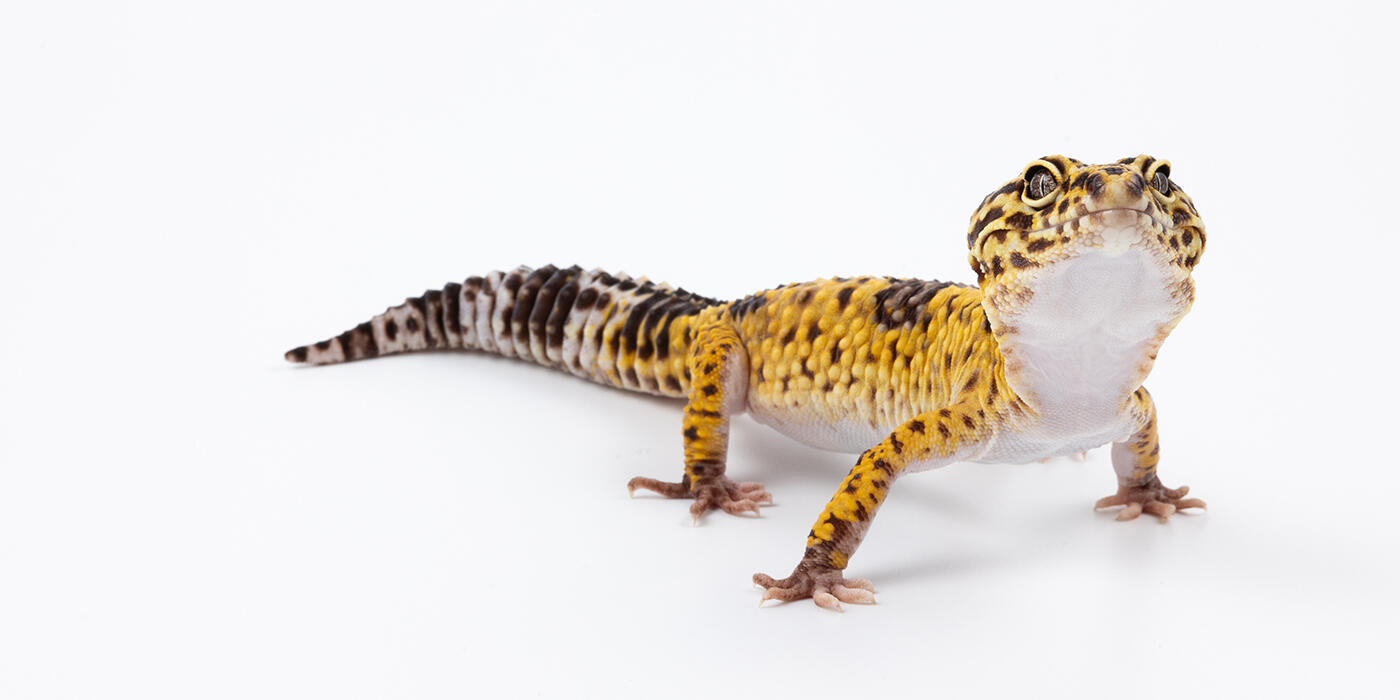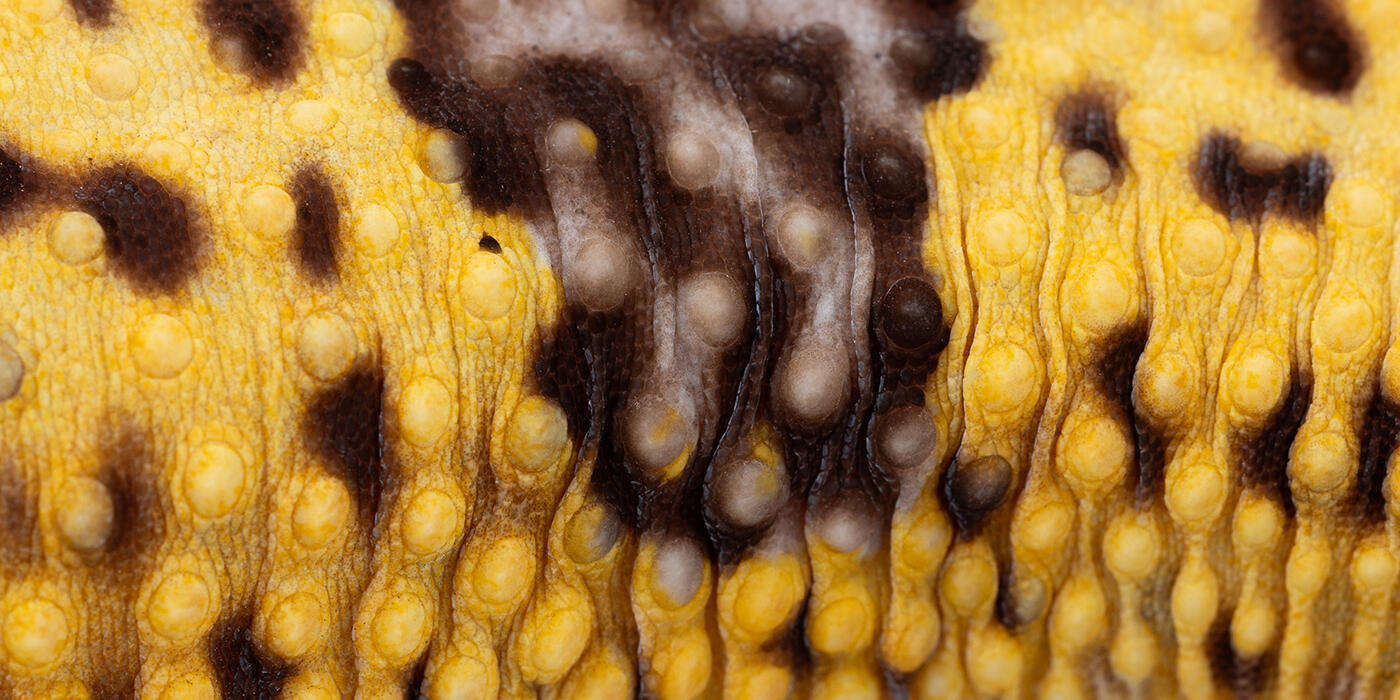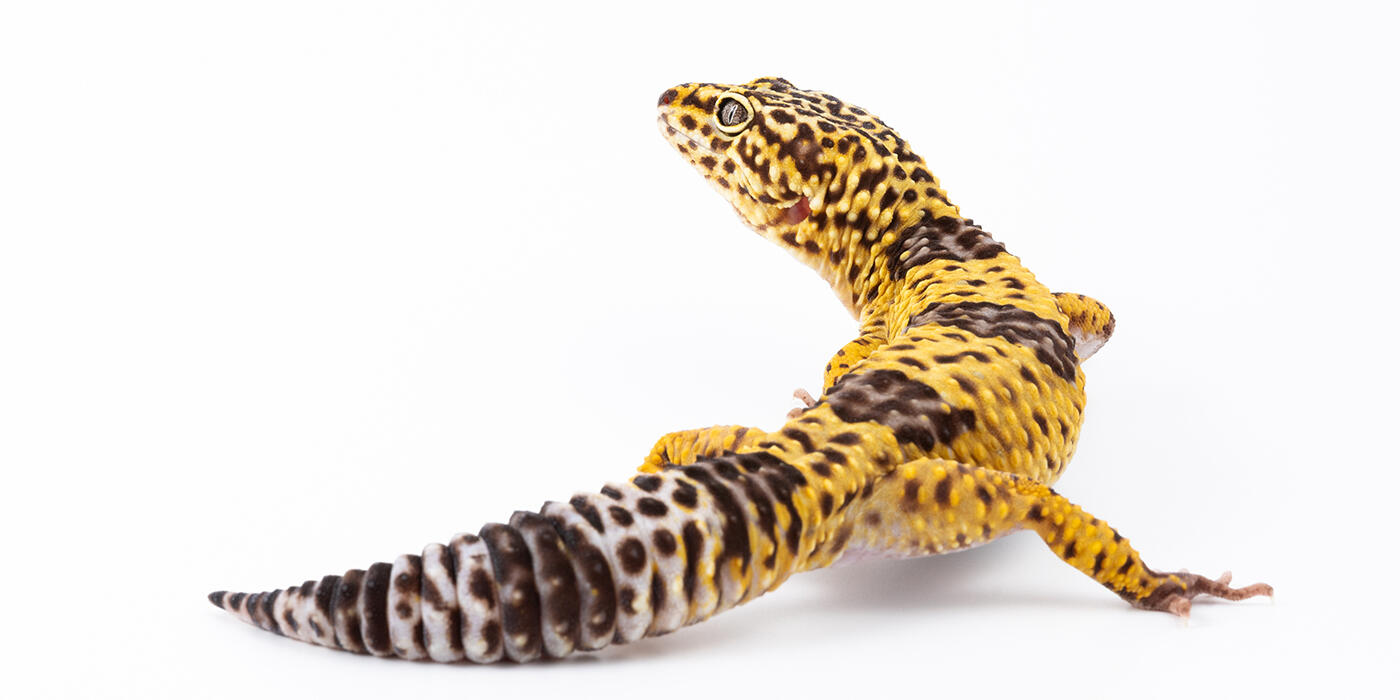Physical Description
The Iranian fat-tailed gecko's color and pattern varies regionally. Its body is generally a shade of yellow with a pale white stipe from the neck to the tail, flanked by brownish-lavender bands. Its head is pale with a reticulated, or web-like, pattern made up of dark, blotchy, thick lines. The underside of its head is typically pale or white. A newborn Iranian gecko's pattern is distinct from an adult's. It has only three solid, dark lines across its back, which fade as the gecko grows older and develops its adult pattern.
When threatened, this gecko can detach its thick tail to distract a predator while it flees. The tail can later regenerate but will grow back abnormally shaped. Iranian geckos also have long toes and spider-like legs that help them climb and navigate the mountainous terrain where they live.
Their bodies are covered in small bumps, called tubercles, which can secrete a liquid irritant capable of causing numbness, pain and swelling on any skin that comes in contact with the liquid. Male Iranian geckos have 11 to 17 preanal pores arranged in an inverted “V” shape. Females also have preanal pores, but they are quite faint.
Size
From snout to tail, an Iranian gecko can be 8-12 inches long (20-30 centimeters), with its tail making up about 40% of its total length. This variation in size is due to geographic location. Smaller geckos are found in the Kermanshah Province, and the largest individuals are in the Ilam Province. Females are smaller than males, with females weighing 3.5-5.3 ounces (100-150 grams) and males weighing 5-6.5 ounces (140-186 grams).
Native Habitat
Iranian fat-tailed geckos are terrestrial and occupy semi-desert or semi-arid mountainous regions in northeastern Syria, northern Iraq, west-central Iran, and Turkey. They are found at elevations between 985 and 3,280 feet (300 and 1,000 meters). These regions typically lack vegetation, except for seasonal agriculture.
Lifespan
The lifespan of the Iranian gecko is not yet known. However, other species in the genus Eublepharis commonly live into their 20s in zoos.
Communication
When frightened, the Iranian gecko will push itself onto the tips of its long toes to lift itself off the ground. This display is accompanied by a loud hissing or squealing noise. The gecko may also wrap its tail around a predator and defecate or bite if given the opportunity.
Food/Eating Habits
Iranian geckos are opportunistic carnivores. They eat grasshoppers, scorpions, beetles, spiders and small lizards. At the Smithsonian's National Zoo, they are fed crickets mealworms, waxworms and cockroaches.
Sleep Habits
As a nocturnal species, these lizards spend their days in deep crevices or gypsum caverns where water is abundant.
Reproduction and Development
Iranian fat-tailed geckos can begin breeding after they are 2 years old. They lay clutches of two eggs several times per year, usually between May and June. Not much is known about their young in the wild. At zoos or under human care, breeders report that hatchlings grow rapidly until they reach their full size at 3-4 years old.
Conservation Efforts
Iranian fat-tailed geckos have a very small distribution range, and the populations that remain in the wild are thought to be small and fragmented. They are collected for the international pet trade and face significant pressure from collectors for the private market. The lack of knowledge about their populations, habitat range and lifestyle is also a conservation concern. While these geckos may be locally abundant in some regions, their overall population has decreased, and the two Turkish localities (Telctek and Birecik) are extremely rare.
Help this Species
Practice ecotourism by being an advocate for the environment when you’re on vacation. During your travels, support, visit or volunteer with organizations that protect wildlife. Shop smart too! Avoid buying products made from animals, which could support poaching and the illegal wildlife trade.
Choose your pets wisely, and do your research before bringing an animal home. Exotic animals don’t always make great pets. Many require special care and live for a long time. Tropical reptiles and small mammals are often traded internationally and may be victims of the illegal pet trade. Never release animals that have been kept as pets into the wild.
Share the story of this animal with others. Simply raising awareness about this species can contribute to its overall protection.
Are you a student? Did you love what you learned about this animal? Make it the topic of your next school project, or start a conservation club at your school. You'll learn even more and share the importance of saving species with classmates and teachers, too.
Smithsonian's National Zoo and Conservation Biology Institute. (n.d.). Iranian fat-tailed gecko. Retrieved December 1, 2025, from https://nationalzoo.si.edu/animals/iranian-fat-tailed-gecko
Animal News

Giant Panda Qing Bao Gets a Checkup ›

7 Spooktacular Animal Facts for Halloween ›




